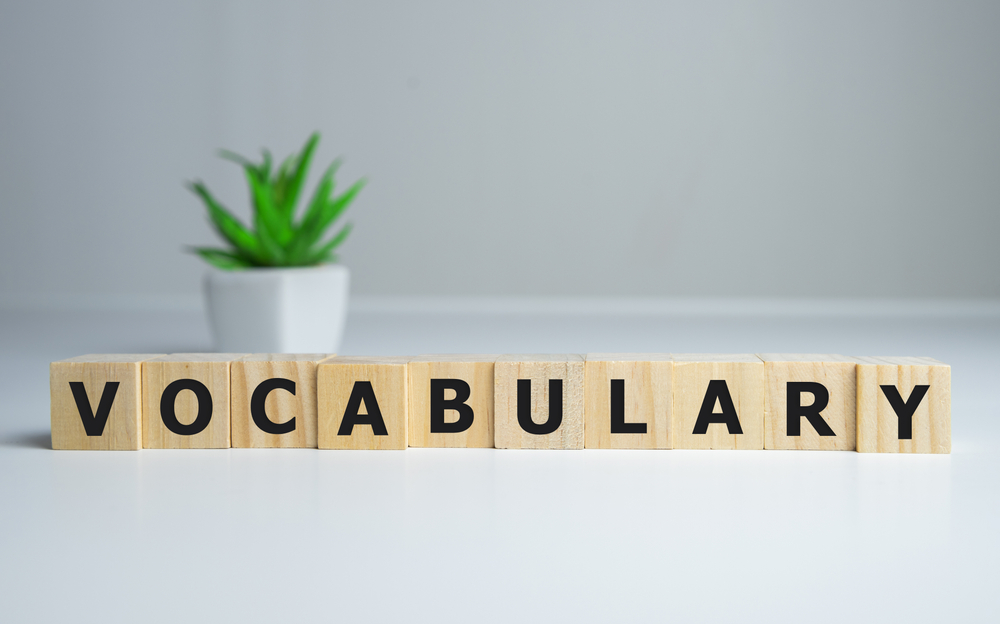Welcome to CEFR training, practice and TEST for level A1

Ve aquí para estudiar el contenido gramatical de este curso:
Name: Basic User:
Level: A1
Description: A1 – Breakthrough or Beginner: Can understand and use basic phrases and expressions, and introduce oneself and others.
Description Based on Skills:
- Understanding: Can understand and use familiar everyday expressions and very basic phrases aimed at the satisfaction of needs of a concrete type. The ability to understand is usually limited to simple, clear, slow, and often repeated speech.
Let’s put your understanding to the test! please complete the following 5 tasks.
Task 1: Listen to short recordings about everyday life, answer the questions.
Listening Exercise 1: At the Grocery Store

Comprehension Questions:
- Where is the woman?
- What 3 items did the woman definitely plan to buy?
- What is the woman’s favorite fruit?
- Name two additional items the woman buys.
- What is the weather like today?
- Is the grocery store far from the woman’s house?
script: “Hello, I am at the grocery store. I need to buy apples, bread, and milk. Apples are my favorite fruit. I also buy some cheese and eggs. It is sunny today. The grocery store is near my house.”
Answers for Listening Exercise 1: At the Grocery Store
- Where is the woman?
- The woman is at the grocery store.
- What 3 items did the woman definitely plan to buy?
- Apples, bread, and milk.
- What is the woman’s favorite fruit?
- Apples.
- Name two additional items the woman buys.
- Cheese and eggs.
- What is the weather like today?
- It is sunny.
- Is the grocery store far from the woman’s house?
- No, it is near the speaker’s house.
Listening Exercise 2: My Daily Routine

Comprehension Questions:
- What time does Alex wake up?
- What does Alex usually have for breakfast?
- What is Alex’s job?
- What time does Alex come back home?
- What does Alex do in the evening?
- What time does Alex go to bed?
Script: “Good morning! My name is Alex. I wake up at 7 am every day. eat breakfast at 7:30 am. I usually have eggs and toast. Then, I go to work at 8 am. I am a teacher. I come back home at 4 pm. In the evening, I cook dinner and watch TV. I go to bed at 10 pm.”
Answers for Listening Exercise 2: My Daily Routine
- What time does Alex wake up?
- Alex wakes up at 7 am.
- What does Alex usually have for breakfast?
- Eggs and toast.
- What is Alex’s job?
- Alex is a teacher.
- What time does Alex come back home?
- Alex comes back home at 4 pm.
- What does Alex do in the evening?
- Alex cooks dinner and watches TV.
- What time does Alex go to bed?
- Alex goes to bed at 10 pm.
Listening Exercise 3: A Day at the Park

Comprehension Questions:
- Where does the speaker go today?
- What does the speaker see near the lake?
- What are children doing in the park?
- What does the speaker eat and drink?
- How does the speaker feel about the day?
Script: “Today, I go to the park. I see many trees and flowers. I sit near the lake. Many ducks are in the lake. Children are playing soccer. I eat a sandwich and drink juice. It is a nice day.”
Answers for Listening Exercise 3: A Day at the Park
- Where does the speaker go today?
- The speaker goes to the park.
- What does the speaker see near the lake?
- The speaker sees many ducks in the lake.
- What are children doing in the park?
- Children are playing soccer.
- What does the speaker eat and drink?
- The speaker eats a sandwich and drinks juice.
- How does the speaker feel about the day?
- The speaker feels it is a nice day.
Listening Exercise 4: Shopping for Clothes

Comprehension Questions:
- Where is the speaker?
- What does the speaker want to buy?
- What colors are the shirts the speaker finds?
- Why doesn’t the speaker buy the blue shirt?
- Which shirt does the speaker buy?
Script: “I am at the clothing store. I need a new shirt. I find a blue shirt and a red shirt. and I try them on. The blue shirt is too small. The red shirt is perfect. I buy the red shirt.”
Answers for Listening Exercise 4: Shopping for Clothes
- Where is the speaker?
- The speaker is at the clothing store.
- What does the speaker want to buy?
- The speaker wants to buy a new shirt.
- What colors are the shirts the speaker finds?
- The speaker finds a blue shirt and a red shirt.
- Why doesn’t the speaker buy the blue shirt?
- The blue shirt is too small.
- Which shirt does the speaker buy?
- The speaker buys the red shirt.
Answers for Listening Exercise 5: Making Weekend Plans

Comprehension Questions:
- Who is speaking?
- What does the speaker want to do this weekend?
- What time does the movie start?
- What does the speaker plan to do after the movie?
- What does the speaker ask the listener to do?
Script: “Hi, this is John. This weekend, I want to see a movie. The movie starts at 6 pm on Saturday. After the movie, we can eat dinner. Do you want to come with me? Please call me back. Bye!”
Answers for Listening Exercise 5: Making Weekend Plans
- Who is speaking?
- John is speaking.
- What does the speaker want to do this weekend?
- The speaker wants to see a movie.
- What time does the movie start?
- The movie starts at 6 pm on Saturday.
- What does the speaker plan to do after the movie?
- The speaker plans to eat dinner after the movie.
- What does the speaker ask the listener to do?
- The speaker asks the listener to call him back.
- Speaking: Can introduce themselves and others and can ask and answer questions about personal details such as where they live, people they know, and things they have. They can interact in a simple way provided the other person talks slowly and clearly and is prepared to help.
- Reading: Can understand familiar names, words, and very simple sentences, for example on notices and posters or in catalogs.
- Writing: Can write a short, simple postcard, fill in forms with personal details, for example entering their name, nationality, and address on a hotel registration form.

To pass the A1 level in the quickest and most effective way, it’s essential to focus on the following key points:
1- Basic Vocabulary:
Go here for Vocabulary
Go here for Extra Vocabulary
Learn and memorize essential everyday words and phrases.
Basic Greetings:
- Hello
- Hi
- Good morning
- Good afternoon
- Good evening
- How are you?
- What’s up?
Introductions:
- My name is [your name].
- Nice to meet you.
- I’m from [your country/city].
- How about you?
Welcome to CEFR TEST PRACTICE A1
Numbers:
- One
- Two
- Three
- Four
- Five
- Six
- Seven
- Eight
- Nine
- Ten
Colors:
- Red
- Blue
- Green
- Yellow
- Orange
- Purple
- Black
- White
Days of the Week:
- Monday
- Tuesday
- Wednesday
- Thursday
- Friday
- Saturday
- Sunday
Common Objects:
- Table
- Chair
- Book
- Pen
- Bag
- Phone
- Cup
- Car
- Tree
- Sun
Simple Verbs:
- Go
- Come
- Eat
- Drink
- Sleep
- Play
- Study
- Work
- Read
- Write
Sample Conversation Chunk:

Hi! Good morning.
Good morning! How are you?
I’m good, thank you. How about you?
I’m doing well too, thanks. My name is Sarah. What’s your name?
I’m John. Nice to meet you, Sarah.
Nice to meet you too, John. Where are you from?
I’m from New York. How about you?
I’m from Los Angeles.
What day is it today?
It’s Wednesday.
Oh, right. What are your plans for the weekend?
I’m going to visit my parents on Saturday,
and on Sunday, I’ll relax at home.
That sounds nice. I’m going to play soccer
with my friends on Saturday, and on Sunday, I’ll read a book.
Sounds like a fun weekend! By the way, do you like colors?
Yes, I do. My favorite color is blue. What about you?
I like green. It reminds me of nature.
Speaking of nature, do you like trees?
Yes, trees are beautiful and important for the environment.
Absolutely. Oh, look, there’s a coffee shop.
Do you want to go in and have a cup of coffee?
Sure, that sounds great!
Example: Hello, my name is Alice. I am 25 years old. I live in London…
2- Useful Expressions:
Practice common phrases for various situations, such as asking for directions, ordering food, and making simple requests.
Asking for Directions:
- Excuse me
- Where is (the) _____?
- How do I get to _____?
- Can you show me on the map?
- Is it far from here?
- Go straight
- Turn left/right
- It’s on the left/right
- It’s nearby/far away
- Thank you!
Ordering Food:
- I’d like _____, please.
- Can I have _____?
- What do you recommend?
- How much is it?
- Is it spicy/mild?
- Can I get it to go?
- No onions, please.
- Enjoy your meal!
- The bill, please.
- Thank you!
Making Simple Requests:
- Can you help me?
- Could you please _____?
- May I have a pen?
- Would you mind _____?
- Excuse me, can I ask a question?
- Can you repeat that, please?
- Could you speak slower?
- I don’t understand. Can you explain?
- Can I borrow your phone?
- Thank you for your help!
Example: Excuse me, where is the nearest bus stop?
3- Pronunciation and Listening:
Pay attention to pronunciation and practice listening to native speakers. Focus on mimicking the sounds correctly.
Example: Listen to audio recordings or watch videos with simple dialogues to improve your listening skills.
Go here for A1 Listening and Other Activities
4- Basic Grammar:
Understand and use basic sentence structures, including subject-verb-object order and simple questions.
Go here for A1 grammar Course and Other Activities
Example: Do you like pizza? Yes, I like pizza.
5- Reading Comprehension:
Read short texts, signs, and simple sentences to improve reading comprehension and vocabulary.
Example: Read children’s books or beginner-level texts to practice reading in the target language.
Go here for A1 Reading and Other Activities
6- Writing Practice:
Start with basic writing exercises, such as filling out forms, writing short emails, or keeping a simple journal.
Example: Write a postcard to a friend, describing your vacation.
Go here for A1 Writing and Other Activities
7- Speaking Practice:
Engage in conversations with language partners, language exchange groups, or language apps. Practice speaking even if you make mistakes.
Example: Role-play everyday situations, such as ordering food in a restaurant.
Go here for A1 Speaking and Other Activities
8- Cultural Understanding:
Learn about cultural customs and etiquette in countries where the language is spoken. This helps you avoid misunderstandings.
Example: In some cultures, it’s polite to take off your shoes before entering someone’s home.
9- Practice Regularly:
Consistency is key to language learning. Set aside time each day for practice, even if it’s just for a few minutes.
10- Use Language Apps and Resources:
Utilize language learning apps, online courses, and resources tailored to beginners. These can provide structured lessons and practice materials.
Remember, progress in language learning takes time and effort. Celebrate your achievements along the way, no matter how small, and stay motivated. Setting realistic goals and focusing on the fundamentals will help you progress through the A1 level efficiently.
Please do the following test and go on to the next page


